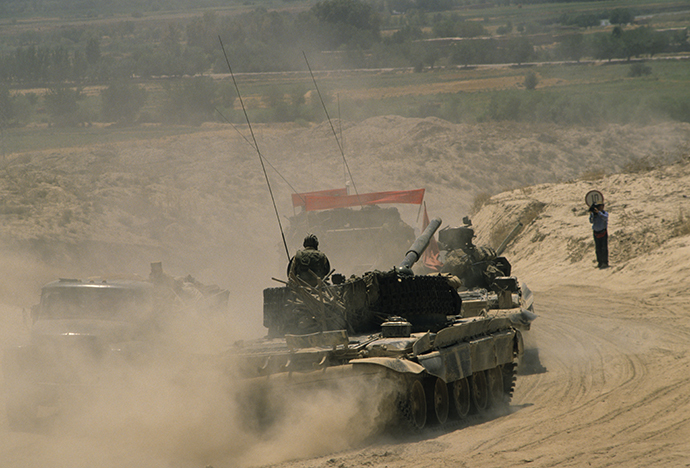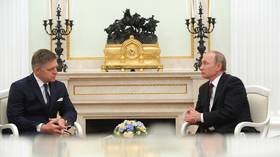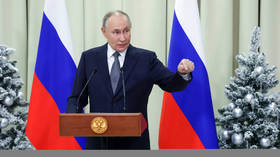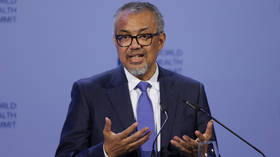Lessons learned? 25 years since Soviet withdrawal from Afghanistan

Exactly 25 years have passed since the Soviet Union pulled its troops out of Afghanistan. The US-led ISAF is on course to do the same this year. Washington can only hope that the bloody aftermath of the Russian withdrawal is not repeated.
So why did both countries invade such a remote and inhospitable state?
By the time the Soviet tanks rolled down the perversely named Friendship Bridge on the border to what is now Tajikistan, few seemed sure.
Purportedly, the Soviet Union deployed its military in 1979 to prop up a Communist government that had come to power in a bloody coup the previous year. Without military intervention, the Kremlin (probably correctly) felt that the government had little chance of survival.
In the era when the world was a chessboard of proxy wars between the East and the West, the war was seen as a counter-move to strengthen the Soviet position in the Islamic world following the Camp David peace accords between Israel and Egypt. Indeed, the US and Arabic states entered the stage immediately – spending billions of dollars funding religious extremists simply on the basis of their hostility to the Soviets.
But for all the post-factum justifications, committing the Soviet Union to a direct military invasion in a non-crucial arena was an arbitrary decision, and was seen as such by many high-level Soviet apparatchiks – even when it was taken.
By 1989, during the height of Mikhail Gorbachev’s perestroika, and in the midst of the collapse of the Iron Curtain, Soviet involvement in Afghanistan seemed downright grotesque.
Over 12 years later, following the Sept. 11, 2001, attacks on New York and Washington, the US invaded Afghanistan with a more seemly (if ironic, considering its past allegiances) justification of dismantling the radical Taliban regime that provided a safe haven for terrorists that staged attacks throughout the world.

Since then, the war aims have grown more nebulous and distant, with several strategic approaches, including the once much-heralded “surge,” failing to bring an end to armed conflict in Afghanistan.
One thing is clear now, however – the US public has had enough. As recently as 2008, most Americans supported the war effort. But polls now show that less than 20 percent of US adults want the troops to stay.
Comparing the numbers
Both NATO and the Soviet Army used forces of comparable sizes for the duration of the conflict, with around 100,000 foreign soldiers present at any one time. The USSR and the US have both tried to relieve the burden by training local militias, though the Soviets were more cautious, fearing mass defections of newly-trained men with weapons who perhaps weren’t as receptive to secular Communist ideals as they first appeared. Considering the difficulties the US has had already with abrupt and fatal betrayals among its own Afghan National Security Forces, the worry does not appear to be entirely groundless.
The official death toll for the Soviet forces – published only in the last months of the conflict - was close on 15,000, though most experts believe it to have been higher. In their 13 years on the ground, the NATO allies have lost in excess of 3,400 personnel.
But the biggest contrast is between the numbers of dead Afghans. Between 1 and 2 million Afghans were killed during the Soviet invasion and occupation, and perhaps as many as 3 million were wounded. More than 5 million, perhaps as much as one-third of the country’s population, became refugees, crossing into Pakistan and Iran.
Official statistics say that less than 20,000 civilians have perished in Afghanistan since 2001, though classifying people as civilians when fighting an informal guerilla war defies firm criteria. The death toll of non-Western fighting casualties on all sides is unknown, but has probably reached at least 100,000 and could be higher – though nowhere near the numbers of the earlier conflict.

The greater bloodshed during the Soviet invasion as compared to the American one is an indicator of greater intensity of the older conflict. The insurgency fighting against NATO troops are armed with whatever weapons they can get through black market. The Soviet troops had to deal with the advanced weapons supplied by the US and its allies. For instance, the American portable SAM missiles in the hands of the Taliban were a constant threat to Soviet helicopters. And unlike NATO, the Soviet Army didn’t have the luxury of drones to collect intelligence and deliver strikes without the risk to soldiers’ lives.
The smaller gap in technological capabilities between the Afghans and the occupying forces in the Soviet invasion is also reflected in the war budgets. Financially, it was estimated that the Soviet Union was spending $2 billion a year fighting the war. Soviet accounting and the fact that the USSR was a command economy makes a straightforward comparison difficult, however.
The US alone has directly spent around $700 billion on its war in Afghanistan. But a Harvard study published in 2012 estimated that the overall impact of the Afghanistan and Iraq wars on the US economy is actually between $4 trillion and $6 trillion – a colossal figure representing at least $75,000 for each American citizen.
Did either side really achieve their aims?
The more recent invaders are happy to paint a picture of hard-earned political, economic and social transformation. School attendance has risen by eight times in comparison with Taliban rule period, millions of refugees have returned from neighboring states. Women’s rights have substantially improved from the time of Taliban rule.
The picture is balanced out, however, by millions of dollars wasted to corruption and mismanagement, with some of the reconstruction money ending up in the hands of the Taliban and funding their attacks on the government and the occupiers. Another grim brushstroke in the picture is the burgeoning heroin industry, which has skyrocketed in Afghanistan under NATO control and made the country the world’s dominant producer of the drug.
During the Soviet occupation, the foreign invaders also sent bright progress reports home from Kabul. Russian engineers, teachers and doctors helped the country build infrastructure, and modernize its education and healthcare.
Despite both investment drives, Afghanistan remains one of the world’s poorest countries, its potentially vast mineral reserves untapped amid the instability.
In the end, both the USSR and the US-led coalition have ended up in somewhat similar predicaments.
After initial military successes, both superpowers realized that the only way to control vast swathes of mountainous lands (at one point in the 1980s it was estimated that there were 4,000 separate bases manned by anti-Soviet fighters) was either to deploy a force bigger by an order of magnitude, or to implement brutal and ultimately counter-productive suppression tactics.
Neither strategy was affordable or sustainable.
So both the USSR and the current coalition eventually settled for controlling major population centers and communication routes, while abandoning whole regions to the Taliban.

So if the Soviet experience in eventually leaving Afghanistan is anything to go by, what should we expect next for the US-led coalition’s chances?
Despite the Soviet forces leaving an army’s worth of weapons behind, the Mujahedeen could smell blood the day the Russians departed, and ramped up their offensives before overthrowing the Communist regime in 1992.
The ousted leader, Mohammad Najibullah, holed up in a UN building in Kabul for four years until the Taliban stormed the city in 1996. They seized and castrated the politician, before dragging him through the streets and hanging him in front of a baying crowd.
The aggressively conservative Taliban then ruled the country until the next foreign invasion in 2001.
And they intend to rule again when the US leaves. Marking the anniversary of the Soviet departure, the Taliban taunted the United States, saying that the Soviet Union was no longer on world maps and that the US’s fate would be the same, "if God wills it."

As NATO forces leave Afghanistan this year, leaving behind only a potentially smaller US force to protect the Kabul government, the future appears somewhat uncertain. And after the departure from office of Afghan President Hamid Karzai, who is to leave his post when his second term runs out in April, the new government has little chance to stand up against the Taliban without significant foreign military backing.
Just like the Soviets, the United States has promised continued funding of the central government. Unlike cash-strapped post-Soviet Russia, it has the borrowing power to make this a reality.
But it is obvious that the US’s cherished Western values have taken no deeper root in the country over the decade of American rule than the ideas of communism did over the decade of Soviet rule. And it is not clear that feeding the corrupt Afghan regime money will buy any long-term stability.
Several academic studies designed to calculate the best scenario for post-NATO Afghanistan say that cutting a deal with the Taliban would actually be better than allowing another massively destructive stage of the civil war to break out.
Whether having the Taliban onside would allow any of the putative gains of Western presence to remain is questionable; indeed, it is not apparent that the Islamic radicals would even wish to negotiate if they can sense outright victory. Karzai’s attempts to negotiate with the Taliban have so far produced little success.
And if the example of the US pullout from sectarian strife-riven Iraq is any kind of indicator, the prospects for future stability in Afghanistan are anything but reassuring.















